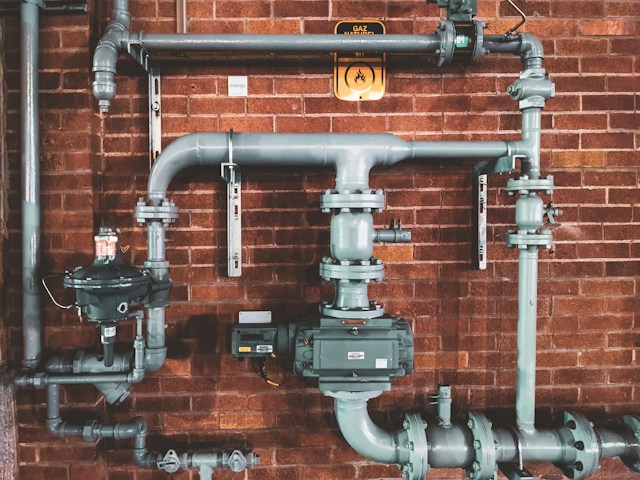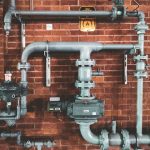Water management is a critical aspect of the planning and operation of large-scale commercial real estate developments. It is a key responsibility of property developers, architects, and property managers alike. As we delve into the subject matter, we will explore the best practices for water management in these developments, with particular focus on water conservation, greywater recycling, stormwater management, irrigation practices, and water-efficient landscaping.
Water Conservation
One of the first areas to consider when discussing water management in commercial real estate is water conservation. This refers to the reduction in water use and the implementation of strategies to save water. In commercial real estate, this can be achieved through a variety of techniques and technologies.
A lire en complément : What strategies can real estate professionals use to address affordability issues in housing markets?
In the restroom facilities, for instance, high-efficiency toilets, urinals, and waterless urinals can be installed to reduce water use. Similarly, water-efficient appliances such as Energy Star-rated dishwashers and washing machines can be integrated into commercial spaces. Leak detection systems are also helpful in identifying and addressing any leaks promptly, preventing wastage of water.
Water metering is another effective tool in water conservation. It allows management to monitor water use and identify any unusual spikes in usage, which could indicate a problem. Also, upgrading the cooling towers with water-efficient models and using alternate water sources, such as rainwater or condensate water, for cooling towers can help in water conservation.
Dans le meme genre : How to integrate sustainable landscaping and biodiversity conservation into real estate projects?
Greywater Recycling
Another best practice for water management in commercial real estate developments is greywater recycling. Greywater is the wastewater generated from activities like handwashing, showering, and laundry. It typically excludes heavily soiled water from toilets, kitchens, and industrial processes. By installing a greywater recycling system, this wastewater can be treated and reused for non-potable purposes such as toilet flushing, irrigation, and cooling.
Greywater recycling not only reduces the demand for fresh water but also decreases the amount of wastewater sent to sewage treatment plants. It’s important to note that the implementation of greywater recycling requires careful planning and design to ensure it meets health and safety requirements.
Stormwater Management
In large-scale commercial developments, stormwater management is crucial. It deals with controlling runoff water during heavy rain or storms to prevent flooding, erosion, and water pollution.
Stormwater management practices often include the creation of green roofs, rain gardens, and permeable pavements. These features absorb or slow down runoff, minimizing the immediate impact of heavy rainfall on the sewer system. Additionally, they can improve the aesthetic appeal of the development, create habitat for wildlife, and provide recreational space for the users of the property.
Irrigation Practices
When it comes to landscape maintenance in commercial properties, irrigation practices play a significant role in water management. The best irrigation practices aim to reduce water use while maintaining the health and aesthetic appeal of the landscape.
Investing in an efficient irrigation system is a good starting point. Drip irrigation and soaker hoses, for instance, deliver water directly to the plant roots, reducing evaporation and runoff. It’s also beneficial to implement smart irrigation controllers that can adjust watering schedules based on weather conditions, soil moisture levels, and plant water needs, thereby preventing over-irrigation.
Water-Efficient Landscaping
Lastly, water-efficient landscaping, also known as xeriscaping, is an effective water management practice for commercial real estate developments. This approach involves designing landscapes to reduce the need for supplemental water from irrigation.
It often includes the use of native plants that are adapted to the local climate and require less water. Mulching is also a common practice in xeriscaping as it helps in retaining soil moisture and reducing weed growth. Furthermore, grouping plants with similar water needs together optimizes irrigation and reduces water waste.
In conclusion, water management in large-scale commercial real estate developments is a multifaceted field. It requires a strategic approach that encompasses water conservation, greywater recycling, stormwater management, efficient irrigation practices, and water-efficient landscaping. With these best practices in place, developments can significantly reduce their water footprint, contribute to environmental sustainability, and also save on water-related costs.
Green Infrastructure and Single-Pass Cooling Systems
Green infrastructure plays a significant role in water management for large-scale commercial real estate developments. This refers to an approach that integrates both natural and engineered systems to provide environmental services, such as managing water and reducing heat effects. Green infrastructure can significantly reduce the amount of runoff by absorbing rainwater, thereby reducing the strain on sewer systems.
Rain gardens, a form of green infrastructure, are landscaped areas planted with wildflowers and other native vegetation that soak up rainwater. They are typically positioned near a runoff source like a downspout, driveway or sump pump, to capture rainwater runoff and stop it from entering the sewer system.
Besides rain gardens, rain barrels or cisterns are also effective tools for capturing and storing rainwater, reducing the amount of water that is drawn from municipal or well water supplies for landscape irrigation.
Single-pass cooling systems in commercial properties, on the other hand, can lead to excessive water usage. These systems use water only once to cool equipment before it’s discharged into the sewage system. To improve water efficiency, it is beneficial to upgrade these systems to a recirculating system or use alternate cooling methods.
Low Impact Development and Surface Water Management
Low impact development (LID) is a sustainable design approach aimed at managing stormwater runoff at the source with techniques that infiltrate, filter, store, evaporate, and detain runoff close to its source. The goal of LID is to mimic a site’s pre-development hydrology by using design techniques that infiltrate, filter, store, and evaporate stormwater runoff.
Incorporating LID practices such as permeable pavements, rain gardens, and green roofs into commercial real estate designs can help manage stormwater, reduce water usage, and provide aesthetic and environmental benefits.
Surface water management, on the other hand, involves managing the water which is on the surface of the earth such as rivers, lakes, and wetlands, as well as floodwater. Proper surface water management can help prevent water logging and flooding, protect the quality of surface and groundwater, and improve landscapes and wildlife habitats.
It’s crucial to incorporate surface water management practices into the early stages of development planning. These might include the construction of swales – shallow, wide, and vegetated channels designed to store and/or convey runoff and remove pollutants – or installing sustainable drainage systems that mimic natural drainage patterns.
Conclusion
Intricate and efficient water management in large-scale commercial real estate developments is a necessity in our rapidly urbanizing world. It involves a collection of best practices including water conservation, greywater recycling, stormwater management, efficient irrigation practices, and water-efficient landscaping.
Implementing these practices, alongside green infrastructure, single-pass cooling system upgrades, low impact development, and effective surface water management can significantly reduce water usage and increase sustainability.
In effect, real estate developers can make significant strides towards creating sustainable, low impact developments that not only save money but also contribute positively to the environment. By continually investing in and upgrading water management practices, developers can ensure the longevity and sustainability of their properties while also leading the way in environmental stewardship.











